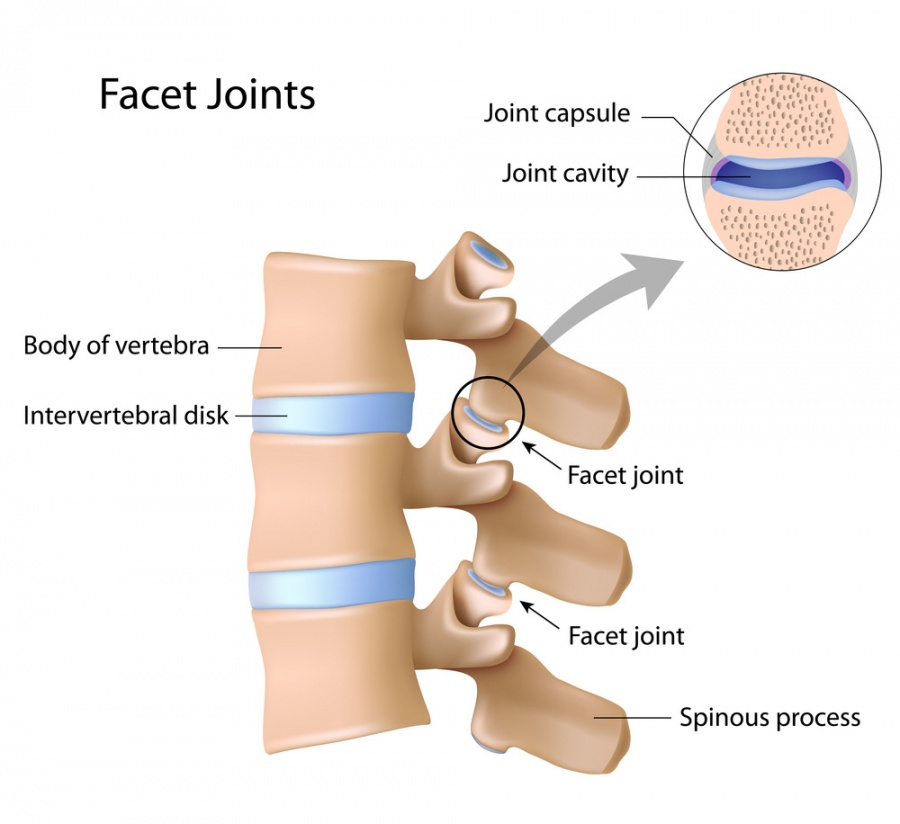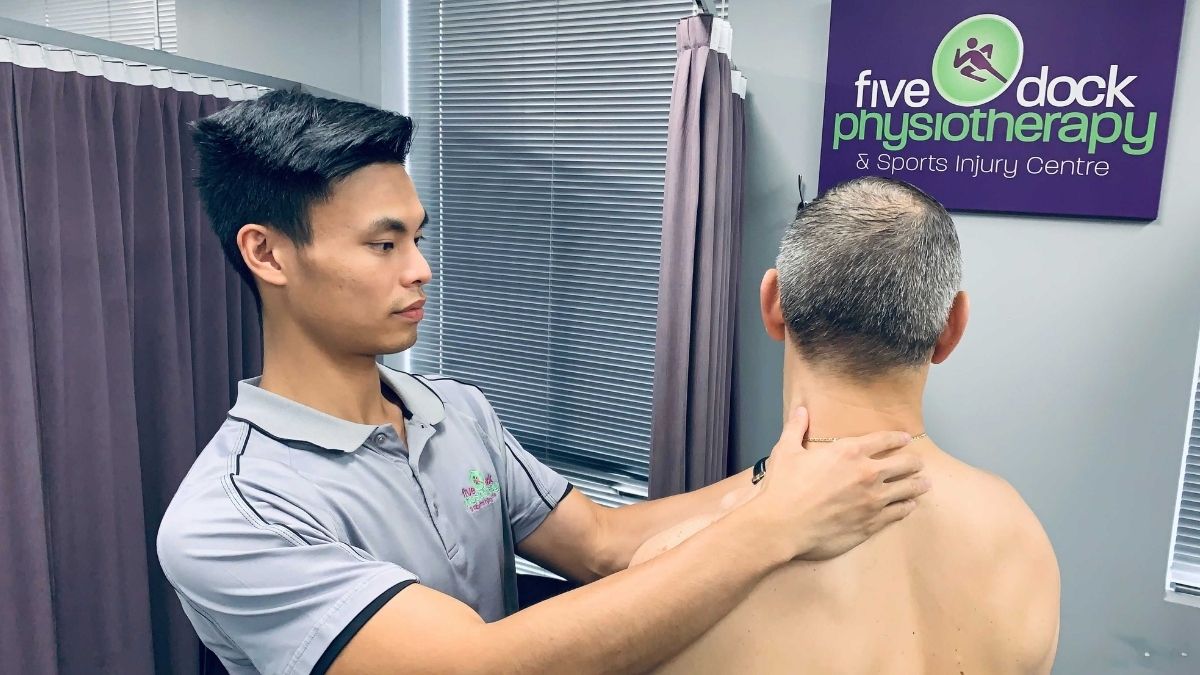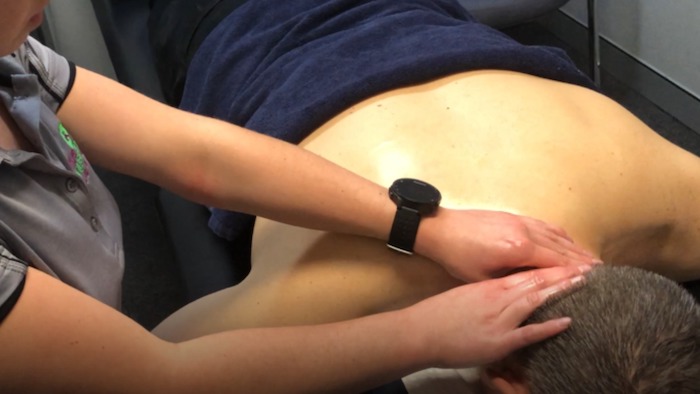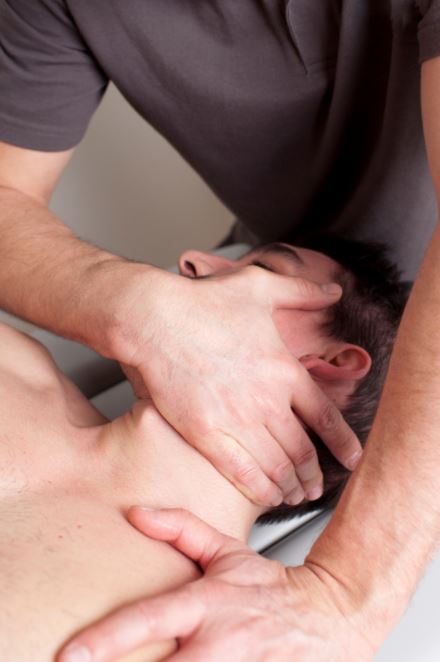Have you ever woken up in the morning with a sore neck, muscle spasm and the inability to turn your head? Well, this is the typical presentation of an acute wry neck.
Often sufferers of an acute wry neck have no idea what brought on the symptoms. It may occur after sleeping with an awkward position or having a restless nights sleep. It can potentially be brought on by a recent injury or a strain, and it is often linked to poor prolonged postures.
Acute Wry neck, also known as an acute torticollis, is characterised by a sudden onset of neck pain with “stuck” or restricted neck movement. Typically, movement is restricted in one direction. The top of the head generally tilts to one side while the chin tilts or turns to the other side. Acute wry neck is often accompanied by spasm of the neck muscles as a protective mechanism and pain, both which limit movement.
What causes Wry Neck?
Although there are several potential medical causes of acute wry neck, the most common cause is due to irritation of the joints, discs or the muscles of the neck. In our clinic we primarily see acute wry necks that are caused by locked facet joints or discogenic wry necks due to pressure from the intervertebral discs.
Anatomy
-
The facet joints are the articulations between the vertebrae bones in the spine. Your facet joints create smooth gliding movements between the adjacent vertebra or bones, which consequently allow for normal neck movement. The facet joints can become restricted in their movement following a traumatic injury such as a car accident or after a sudden jarring movement of the neck. Furthermore, restriction can occur from arthritic degeneration in the cervical spine or poor prolonged neck positions, such as falling asleep on the lounge and poor posture whilst using the computer or when driving. Unfortunately, all of these things can lead to a wry neck. Interestingly, the facet joints can sometimes become restricted without any apparent significant event – this is called an idiopathic wry neck.
The intervertebral discs can also contribute to the onset of wry neck. The intervertebral discs are “the cushions” that serve as the spine’s shock absorption system, which protect the bones and facilitate movement. These discs can cause a wry neck when they protrude and irritate the surrounding soft tissues. Irritation of these structures results in inhibition or underactivity of the deep neck stabiliser muscles and overactivity or protective spasm in the superficial bigger neck muscles. This overactivity or ‘muscle guarding’ further limits neck movement (Shanmugam et al, 2017).

Image source: https://www.spineuniverse.com/conditions/spinal-disorders/facet-joint-syndrome
Signs and Symptoms of Wry Neck
- Sudden onset – sudden presentation of neck pain with limited range of movement
- Pain – due to the irritation within the facet joints, discs, and the surrounding soft tissues
- Limited range of motion – muscle spasm and reduced joint gliding will restrict movement
- Muscle spasm – typically a protection mechanism, the neck muscles will guard movement and tightness will further limit neck range of motion
Examination and Diagnosis
Our physiotherapists will conduct a thorough assessment to determine the involved structures and provide treatment accordingly. Our assessments take into consideration the onset of symptoms and whether they came on abruptly or if they originated from a specific injury or trauma. We will also assess the type of Wry Neck, whether it is caused by facet joint irritation or if its is discogenic in nature. The prognosis or resolution time of a discogenic wry neck is typically much longer and will resolve in weeks to months compared to a facet joint wry neck which can improve more quickly when dealt with promptly and treated appropriately.
We will also assess mobility and strength of the shoulder and thoracic spine (upper back) as these areas impact on the function of the cervical spine and surrounding musculature. Poor control of the scapula can have a significant impact on recurring episodes of acute neck pain, and therefore these structures will be assessed thoroughly (as will the whole kinetic chain) and managed accordingly. A postural assessment is also performed to analyse its impacts on the neck.
During our assessment we will also determine functional goals where appropriate. This ensures that we tailor our treatment to each patient individually, helping guide our patients to a safe return to their normal life tasks, sport, hobbies and work situations and helping to minimise recurrent neck issues or secondary injuries.

Management
Acute wry neck and associated restrictions in joint mobility and muscle spasm can often resolve within a short period of time with timely and appropriate physio management. Wry Necks typically respond well to physiotherapy care including manual therapy techniques, active range of movement exercises, stretching, muscle activation and strength training. Manual therapy techniques including joint mobilisation and soft tissue release work help to reduce acute pain, muscle guarding and also help facilitate normal vertebral joint mechanics in the joints of the cervical spine. Faroq et al. (2017) found that cervical joint mobilisations had a significant effect on pain, disability, neck range of movement and muscle endurance in patients with neck pain.
Exercise plays a huge role in the management of neck pain. Typically this is in the form of postural retraining, shoulder strengthening and deep neck flexor retraining. There is literature showing that changes in deep cervical (neck) muscles (longus capitis, rectus capitis anterior, rectus capitis lateralis, and longus colli) are associated with neck disorders (Jull et al, 2008) and that these impairments in deep cervical muscle function can result in heightened activity of the superficial muscles (e.g. sternocleidomastoids and anterior scalenes) during neck and upper limb movements. Thus it is important that the deep neck muscles are trained. As an adjunct to therapy a stretching program for the overactive muscles, self releases using equipment like a trigger ball and the use of heat can also be beneficial in relaxing tight, spasmed and overactive muscles, and aiding in pain relief.
During assessment and treatment our physiotherapists will identify and address any other factors that may have contributed to the cause of wry neck or neck pain including poor ergonomics and workstation set-up, excessive device use, general poor posture and altered muscle activation patterns. Poor prolonged postures associated with these activities including ‘head forward posture’ and scapula protraction (rounded shoulders) place increased load through the structures of the neck and often contribute to ongoing neck pain. Specific postural exercises such as shoulder blade, and shoulder strength and stability exercises will promote activation and endurance of the correct muscles supporting the neck and helping to reduce the incidence of recurring neck pain episodes. The utilisation of Pilates style physio exercises and using equipment like a reformer can be very helpful to certain patients as they progress through rehabilitation also aiding in prevention. Patients that are suited to this type of care are typically seen at our secondary “Pilates Hub” clinic.
Research by Meisingset et al. (2016) found that neck movement and cervical spine motor control improved within two weeks of physiotherapy treatment. Failure to restore normal neck and shoulder control after an acute wry neck can lead to chronic neck and shoulder pain that can prevent people from engaging/ returning to normal everyday tasks or leisure activities involving the use of their arms and neck.

Conclusion
Acute wry neck is a common neck complaint where the joints and the muscles in the neck become restricted. Often patients wake up with a stiff, sore, and rotated neck. This condition can be treated with great success by our team at Five Dock Physiotherapy & Sports Injury Centre and when seen to quickly a good prognosis is typically achieved. While heat and massage can relieve some symptoms, research shows that physiotherapy treatment involving joint mobilisation and soft tissue massage are effective in regaining neck movement and reducing symptoms, while physiotherapy prescribed exercise can ensure normalised movements, improving muscle control and posture and thus preventing chronic and long-term pain.
Are you struggling with Neck Pain or a Wry Neck?
Physio can help!
GET AN ASSESSMENT & TREATMENT WITH OUR AMAZING PHYSIO TEAM.

- Get crystal clear about what’s causing your Neck Pain
- Find out the most important steps for you to get pain free fast!
- Understand how to use technology without suffering the consequences of neck pain
- Find out the simple yet essential exercises that can help you get lasting relief
- Leave the session with the confidence of knowing exactly what to do to get symptom free and back to living life without pain

